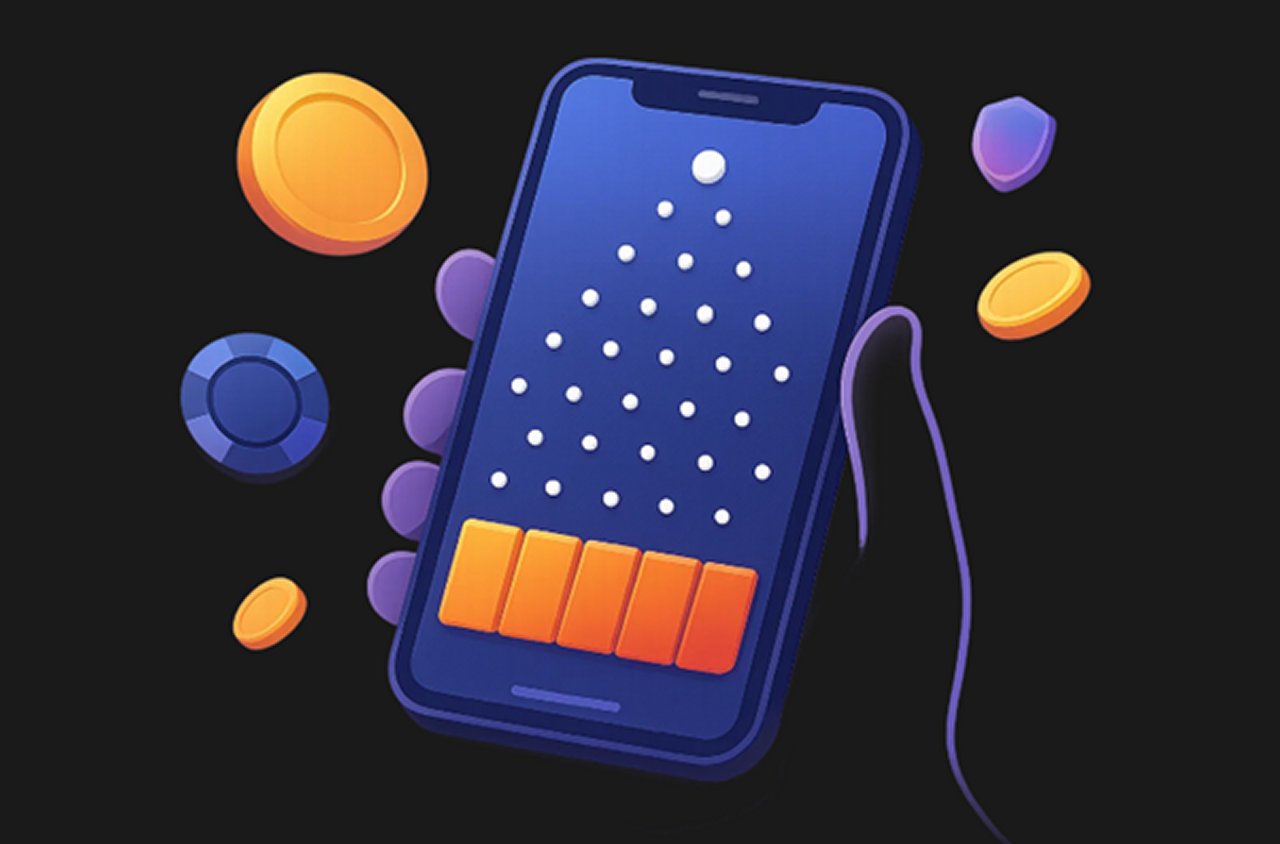I keep a short log after each set of drops. It helps me see what worked, what did not, and where I felt stretched. My aim is simple: quick rounds, light stakes, and a clear exit. I write in plain language and skip hype terms that creep into guides and ads; clean notes keep my mind steady when a streak swings.

On plinko I often review the basics, then pick a grid that matches my mood and balance. A ball lands on pegs, bounces left and right, and reaches a slot with a payout. The path is random; I treat each drop as a small event with a known cost and an unknown end. That frame keeps my play short, steady, and easy to pause.
How I play plinko casino with a clear plan
Most days I start with a small figure I can set aside for play. I split it into many tiny drops and look for boards that load fast and show past round data. A steady frame rate, simple sounds, and a neat payline help me read each bounce without strain. If a site offers two or three board styles, I try the one with a moderate row count first. I prefer licensed hubs, clear terms, and prompt withdrawals; less friction means more time for short, calm sessions.
Session setup and money limits
Before the first click I map the session in a few lines. I note the number of planned drops, the single-drop size, and a firm stop for both wins and losses. I sit a bit taller, breathe out, and start slow. When I see that tilt feeling arrive, I pause the run and take a brief break. This is not about beating the board; it is about keeping a cool loop I can repeat any day without stress.
Quick pre-play checks I use:
- Pick a grid that loads fast and runs smooth on my device.
- Set one tiny stake for the first ten drops.
- Fix a win pocket to keep and a loss pocket to protect.
- Keep a glass of water on the desk and a clock in sight.
After the first ten drops I scan my notes. If the pace feels rushed or choppy, I cut the stake and slow down. If I feel fresh and the board runs clean, I may extend the session by a few minutes. A pause helps me avoid long, hazy strings that blur one round into the next.
What makes a good plinko app for me
A good app keeps the loop short and clear. It opens fast, shows the board with no clutter, and places key buttons within one thumb’s reach. I like a choice of quiet or no sound. A settings tab with row count, risk tiers, and history helps. If a help page explains RNG basics in plain words, that is a plus. I read the support page and the payout rules once, then save a screenshot. App reviews help too, yet I still test on my device to see if touch input feels crisp.
Speed, fairness, and support
Speed matters, as drag between drops kills the rhythm. Fairness shows up in audit notes, a public policy on random draws, and clear labels on payouts. I do not need fancy effects; I need a board I can trust and a receipt for each round. Support that replies with short, direct answers earns my time. A chat that resolves a small deposit hiccup once is worth more than a glossy banner. If an app mixes an intro demo with helpful prompts and keeps fees transparent, I stay. If it hides terms or stalls on payouts, I walk.
Before I move on, here is a compact view I keep on my desk for quick checks:
| Signal | What I look for | Why it matters |
| Load speed | Board opens and drops start within seconds | Keeps the session short and focused |
| License note | Clear audit line and RNG policy link | Builds trust in each result |
| Support reply | Simple answers within minutes | Fixes small issues before they grow |
If a tool hits these three, I am ready to give it a fair trial with tiny stakes. When one of them lags, I stop and look elsewhere. A tidy loop beats flashy extras every time.
Simple ways to read a board without myths
I treat the board like a grid that sends a ball through many small choices. Each bounce shifts the path a bit, then the ball lands. I cannot guide it; my job is to pick a stake that fits my mood and balance, then watch the outcome with a calm head. I write down row count, drop speed, and any visual twist that could distract me. Notes help me switch between boards with less effort and without guesswork dressed up as a “system.”
Demo runs and pattern notes
A demo round helps me test my setup and my patience. I try ten to twenty practice drops, note how the ball moves on that board, and adjust sound and speed. If the board offers low, medium, and high risk paths, I start with the middle. The goal is not to chase a slot; the goal is to learn how the screen feels in my hand or on my trackpad. I keep the session brief, then switch to live play only when I feel fresh. Demo time is cheap training and a good filter for clunky builds.

In training mode I set small goals:
- Check if the app logs each drop and payout cleanly.
- Try different row counts and see which view strains my eyes less.
- Test sound on and off to see which keeps me steady.
- Record average time per drop and target a short, smooth pace.
I give myself a cooling paragraph here: guesswork about “lucky slots” grows fast after a few wins. I write “random” at the top of the page to remind myself what drives the path. A few deep breaths reset the loop and save my balance for the next short run.
I keep a short list of red flags for live play:
- Terms hidden behind login walls or vague payout notes.
- Support that replies with canned lines and no fix.
- Sudden app freezes during cashout.
When I reach the two-thirds mark of my usual article length, I often point new readers to a simple starting hub. If you want an easy jump-off point with a clean entry, plinko game sits on my shortlist for quick trials and basic checks before you build your routine.
Common myths and how I handle them
Myth one says there is a perfect drop point. I have tried left, right, mid, and small offsets. Each path showed good runs and dry spells. The board is a set of tiny forks that add up in ways no eye can track. I still choose drop points to keep the act fun, yet I never treat it as a skill shot. My notes focus on stake size, session length, and my mood. That trio pays off in calmer play and fewer rash clicks.
Luck, streaks, and mindset
Streaks happen. A cluster of wins can feel like proof of control; a string of losses can push me to chase. I write a hard stop for both. When I cross a win mark, I set some gains aside and drop the stake for the rest of the session. When I hit the loss cap, I stop for the day. This rule keeps my head clear and my play light. No trick, no formula, just a plan I can hold. If I return the next day, I start fresh with tiny drops and the same notes page on my desk.
I have learned to value short runs. Ten minutes is enough to enjoy the bounce, see a few outcomes, and step away. I hold one stable stake for a block, then reassess. I test new boards only when I have time to read the layout and terms. A solid app, a simple plan, and a firm stop give me more good days than any pattern hunt. When a session ends, I close the tab, stretch, and jot down one line: stake, time, mood.
Field notes for steady, low-stress sessions
Here is how my week usually looks with this game. I plug short sets into gaps in my day. Morning coffee, five or six drops. Lunch break, a few more. Evening, maybe a small set if I feel fresh. I keep music off and light low. I save screenshots of cashouts and keep a tidy folder for receipts. When a hub offers a tournament, I peek at the rules and prizes, then decide if a short entry fits my plan. Friendly rivalry can be fun, yet I stick to my caps and leave if the schedule feels long.
I am wary of long marathons. Fatigue nudges bad clicks. A timer on the desk helps me step out before focus fades. I skip any site that pushes forced animations or delays cashout with odd checks. I want a calm loop, not a show. If a friend asks how to start, I say: pick a licensed spot, test the demo, set tiny stakes, and write down a stop level you can keep. The rest is luck and discipline, not secret math.
Short take before you play: keep the session small, the mind fresh, and the notes clean. Pick a steady hub, test a demo, and pick a stake that you can forget by bedtime. If you are ready, pick a grid, set a tiny amount, and take one calm drop now—then tell me how it felt and what you want to try next.
